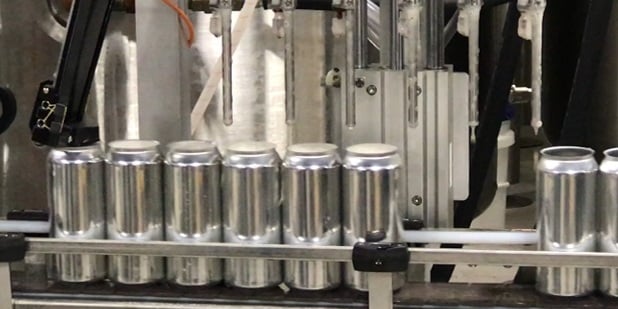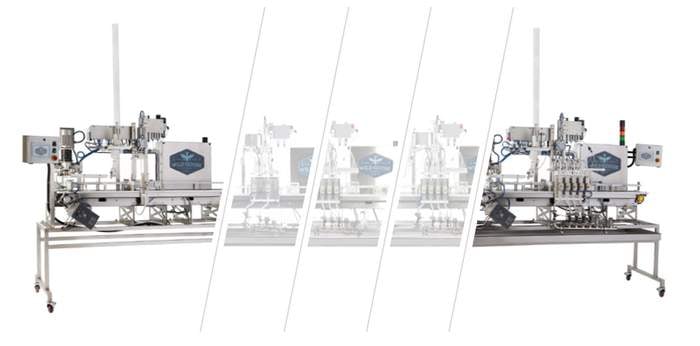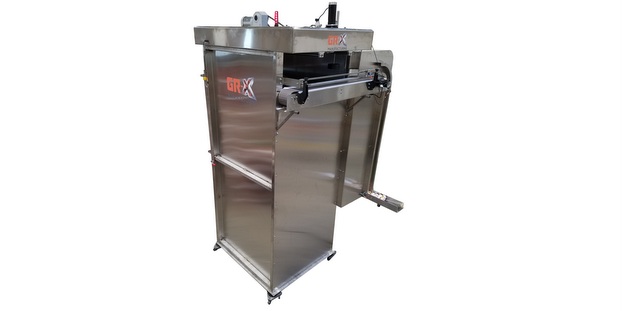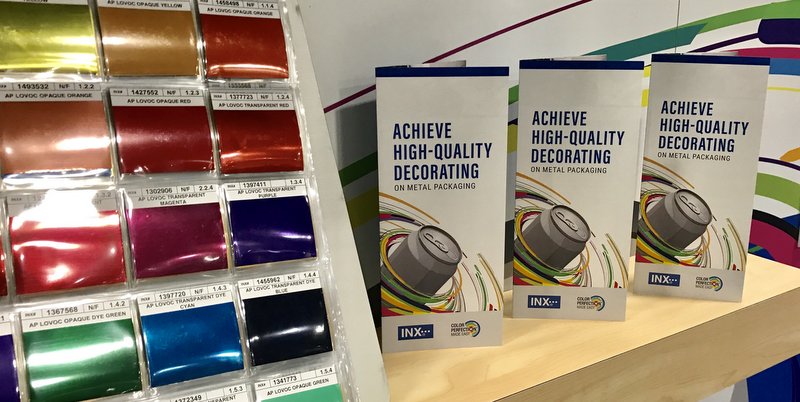
As part of our Craft Beer Canning Line Buyer’s Guide, we asked manufacturers to share some procurement advice for breweries. How should they prioritize their goals? How do you properly size it? What mistakes should be avoided?
Understand your goals / throughput
A canning system can be a great boost to business and help with branding, distribution and generating revenue, but it is a lot of work. Understand what your goals are, and what pieces of your layout are a “want to have”, and which are “need to have,” says Twin Monkeys. “Understanding what throughput (cans per minute) you need is a great place to start the search, and that should give you an idea of what you can expect to spend.”
Don’t forget to incorporate any plans for expansion, says Wild Goose Filling. “Ask yourself: is it possible in the future to add additional fill heads or functionality on this machine to increase throughput if needed? Finally, use practical throughput numbers; not all products package at peak speeds, and throughput can vary based on product conditions.”
As part of that, understand the costs of automating the infeed and outfeed will allow you to decide what you can automate and what you use labor to get accomplished.
“Some elements of a canning line are more easily incorporated at the onset versus after initial install,” notes American Canning. “For example, out-feed can handle application can initially be accomplished by hand with an automated applicator easily added later on. In comparison, something like a de-palletizer would be much more easily incorporated from the beginning.”
Fitting your footprint
Once you are comfortable you know the capacity of the canning line needed, it is important to pick the right footprint for your facility. “Have a plan in place for product flow from tanks to the canning line and to storage or a cold room,” says Wild Goose. “Allow for access to all sides of the machine and add additional space for date coding, multi packing and depal machines. Ask whether the system can be easily moved out of the way when you are not canning.”
Don’t forget space for can storage, utilities like power, and additional machinery like air compressors or CO2 tanks. Once you understand the canning throughput capacity plus total footprint of your machine, you can confidently know you are choosing the right line for your operational needs, now and in the future.
Evaluating fillers
For the canning system itself, breweries first need to consider what equipment will interface with their product (filler/seamer, a robust CO2 system and pumps) and second, what equipment will simply be used to measure and verify various quality metrics (carbonation level, DO pickup, can seams and date coders).
The most important part of any canning line is the filler/seamer, so it is important to evaluate features such as counter-pressure filling versus atmospheric filling, cost and easy of changing between can-body diameters and fill volumes, and availability of spare parts and/or difficulty of performing required maintenance and repairs, says American Canning.
“Counter-pressure filling is a major consideration for today’s canning operations. From our experience in mobile canning and machine building, we have found that these systems allow for a shorter learning curve for operators and a higher tolerance for beverage products that may normally be considered too warm or carbonated for traditional atmospheric-filled cans.”
Plus, with so many companies looking to move into new beverage categories and can-body diameters or fill volumes, the versatility of equipment is essential. Equipment that is flexible and easy to change over will allow for much easier adaptation to changing marketing conditions and/or unexpected supply chain constraints.
Depal decisions
When selecting the right canning line, you need to understand your speed requirements, says GR-X. Two questions they typically ask before being able to quote a depalletizer are:
- What is the speed of your filler machine?
- Does your filler start/stop or continuously feed?
Mulling multi-packing?
End of line packaging is sometimes overlooked and often companies choose packaging that can be manually applied, which seems attractive at first because there is no upfront investment in equipment. Manual solutions can be an excellent choice in the right circumstances, but they can become a challenge if used frequently as part of a production process when your output increases and you are looking to lower material and labor costs, says WaveGrip.
“This means it is key to find a suitable long-term multi-packing solution as early as possible,” says WaveGrip.
Shop first, then finance
Obviously, money has a lot to do with what type of line is available to you, and often owners start the process by checking with their banks/investors/loan companies to see how much is available to them. This is a common practice and logical, but Ska Fabricating recommends doing your shopping first, to see what it is going to cost to get what you need for your packaging line
“I have run into many owners who have done the volume math on the packaging equipment they need to accomplish their volumes and are ready to purchase, but they didn’t shop first so they experience sticker shock when they find out the cost of all the equipment needed. I call this the “Fried Egg”, because the chicken may never hatch. My advice is to start with finding a filler that has a high quality seamer. The filler is the heart of the operation and will dictate how fast you can empty a brite tank.”
Service and downtime
You also want to consider downtime and maintenance as part of your equation when determining how many cans you can produce in any given amount of time. To be certain you have the right machine for your needs and your existing brite tanks, make sure you can empty tanks in a single shift.
WaveGrip says to consider the aftersales service, too. Are you able to easily contact staff for help? Is there a cost for their services? What is the warranty? How often will the machine need to be serviced? Are there any consumable parts? If so how many are there and what are the costs?





Leave a Reply
You must be logged in to post a comment.